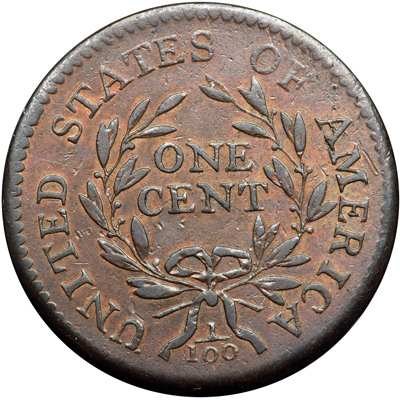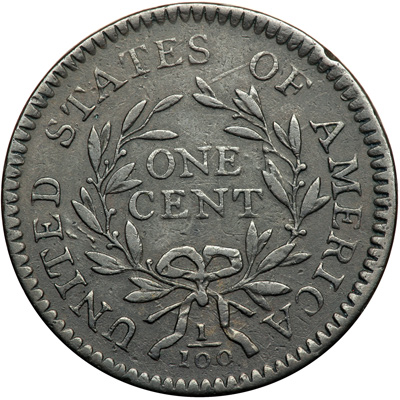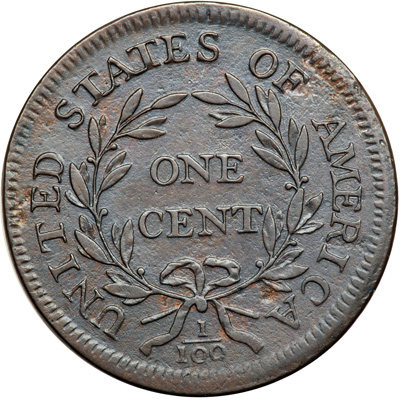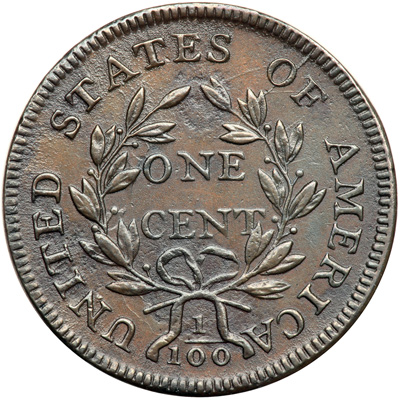-
When you click on links to various merchants on this site and make a purchase, this can result in this site earning a commission. Affiliate programs and affiliations include, but are not limited to, the eBay Partner Network.
-
Posts
586 -
Joined
-
Last visited
-
Days Won
12
Content Type
Profiles
Forums
NGC Journals
Gallery
Events
Store
Downloads
Posts posted by LINCOLNMAN
-
-
Nancy was very helpful and enthusiastic. A credit to the ANA and numismatics. Condolences to her family.
-
One Cent is doubled. You pros: is this machine doubling?
-
Saw this coin ATS, really amazing, thanks for the added background.
-
Should add the buff had a green CAC sticker, and looked to me all its legs.
-
This is an interesting case. I recently sold a 38d Buff OGH 66 thru GC. I had held it for many years, bought it for my type set, but it no longer fit the set. Really beautiful iridescent toning, a superior example. I sold it with a number of other coins, so didn't pay much attention to the bidding or the result until well after the auction ended. It started at $20, had 11 bids and sold for about $814. Haven't tried to keep track of it but there must be some folks out there with very sharp grading skills or some real gamblers. Yes, I'm very happy, but can't help but scratch my head.
-
Hope they didn't transport Ms. Liberty across state lines for immortal porpoises.
-
Reminds me of Bartelby, Melville's character, but in reverse.
-
- Popular Post
- Popular Post
If NGC hadn't gone back and forth on this we would all applaud this as a magnanimous and hobby-friendly decision, although it is clearly a business decision. I have a mixture of coins and always will - I prefer doing business with NGC but consider crossing a waste of time and money, other than replacing damaged holders with my holder of choice. I joined the forum about the time that the NGC-only decision was made. Although I have no interest in competing for awards, I am interested in the registry for other reasons. I had decided not to bother, but will now likely give it a shot. All good for me.
- Coinbuf, Jade Collection and Walkerfan
-
 3
3
-
On 11/28/2019 at 11:10 AM, Conder101 said:
You have to remember when dealing with pre-1836 US coinage that every die is different and sometimes there can be significant differences within the same general style or even year. How different they have to be before you decide to include it as a different "type" is up to you.
In the Draped bust cents there are at least four different major rev types
Rev of 94 first type (easy identification point is right branch ends in double leaf single leaves above ONE, double leaf below O in OF)
Rev of 94 second type (easy identification right branch ends in double leaf, single leaves above ONE, triple leaf cluster below OF)
Rev of 95 (easy identification right branch ends in single leaf)
Rev of 97 (easy identification right branch end in close double leaf, double leaves above ONE, three leaf cluster below O in OF)
All four of these reverse show are from one year, 1796 draped bust cent.
Many thanks. Some marked differences, just the sort of thing I was looking for.
-
6 minutes ago, kbbpll said:
People are probably getting bored with me hyping the Barbers, but here are a couple posts about the dime types. You could easily obtain all 3 reverses and both obverses. (Hmm, the links are showing up as "pictures" - haven't seen that on here before. New feature?)
Just what I was looking for, thank you. The difference in the leaves is really quite striking, to me worthy of treatment as a separate "type".
-
2 minutes ago, MarkFeld said:
You already know something about and can easily learn more, regarding what constitutes types and varieties.
Information is easily accessible in sources such as the Red book, various population reports, registry set websites, etc.
Ultimately, it’s up to you what you feel is important and/or desirable to include in your set.
Mark, this forum is also a source, or should be IMO. As many times as I've looked at the Redbook, pop reports, or the like I had no clue that there are as many possible varieties of Barber coins (see above) - for example.
-
13 minutes ago, kbbpll said:
I mostly stand up against the wall at this jr high dance. Pursuing series-specific knowledge can be fun but also daunting. For example, most type collectors are satisfied with one Barber dime, quarter, and half. But if you really want all the design types, you've got two obverse and three reverse designs for the Barber dime, two obverse and three reverse types for the quarter, and two obverse types for the half. If you really wanted all types by year and mint, there are so many transition varieties in the Barbers that you would need dozens of coins. It's fun to dig into a particular series but everyone has to draw their own line somewhere.
Good stuff. Can you elaborate, say just on the Barber dimes ( I have one only) to get rolling?
-
Excellent advice you two and I appreciate it, but I was looking for series-specific knowledge more than advice. Although, I have to admit that was also trying to stimulate some conversation around matters of taste. This place is pretty quiet - reminds me of a junior high school dance most of the time.
-
8 minutes ago, MarkFeld said:
My suggestion is to do entirely as YOU please with YOUR set.
Sure, but I don't have deep knowledge of all series. I wasn't going to include both FH dollar varieties until I read about and saw the clear differences. I don't know what I don't know.
-
I'm just starting on 18th century non-gold. I've decided to include both the 2-leaves and 3-leaves FH dollar varieties. After looking at the reverse designs it seems to me that they are sufficiently different to merit including them both, although only one FH example is "traditional". Conversely, at one point I had decided not to include the No-Drapery LS variety as I had focused only on the drapery. Of course, the overall obverse designs are markedly different, so they are now in my set.
Always open to suggestions: what are your thoughts as to what to leave in or out, compared to the more traditional US federal types (all centuries)?
-
Very cool way to display. Wish we had more such options available.
-
Just a guess: our host doesn't have the resources to adequately police prices on coins with limited demand to ensure consistency. Although, software could be developed to catch these anomalies. I've seen this sort of thing occasionally on price lists for US coins as well. Just a ton of data to deal with.
-
2 hours ago, Coinbuf said:
Very simple for me I'm a Lincoln collector, shinny red pennies have been my passion for the bulk of my collecting time. There are of course subsets, wheatbacks, memorials, shields, short sets, varieties, proofs and so on. I have also collected Morgans and have a semi complete set just missing the really expensive keys but those are just a side distraction from my main love Lincolns. I completed the main subset of Lincolns from 1909 to 1958 (the wheatback years) a couple of years ago and took a break for a bit to decide if and what to do next. Still not really sure on a direction yet but have been adding slowly to a few important year sets I have in progress and I may replace a few less than prudent purchases in my Lincoln set over time. I may continue to add to the Lincolns from 1959 to date or I could add to the Lincoln proofs that I currently have, just not committed to a direction yet.
Until recently I collected Lincoln for many years - all sorts of Lincolniana, including cents. Numismatically, I also had a lot of fun collecting Lincoln medals and tokens by King number. A good subset that goes well with cents is Civil War tokens showing Lincoln. Another area of diversion that I got into was Victor Brenner medals. Of course the VDB medal and plaque that are associated with the cent are cool to own.
-
5 hours ago, coinsandmedals said:
You may already have a copy of it, but Schilke and Solomon published a book on the topic in 1964. I bought a copy a few years ago, but I have yet to take the time to read it.
Thanks for the heads-up! I'll try to track down a copy. May try the ANA lending library if I cant find one for sale.
-
6 hours ago, Just Bob said:
Do you use the Red Book to determine which coins to include in this set, or do you have historical or anecdotal information about other coins that are not included in the Red Book?
Used several sources, a good one being registry type (ATS). Most recently found a list of coins dug in Jamestown and duplicated those types as best I could. Lots of cheap fun finding those old coins raw (could not find slabbed examples of most). Many were details graded when I sent them in, but that seems appropriate for coins of that vintage. I haven't done any gold, reasoning that few 17th - 19th century Americans used gold, but if I find out otherwise, I'm ready (any excuse to collect...). One thing I should do is add more South and Central American examples since they were the staple of foreign circulating coins. As of now I just have one example each of a cob 8 reales, and 1/2, 1, 2, 4, and 8 reales, some portrait, some pillar. Lots of fun and learning and probably as relevant to early American history as US federal and more traditional colonial coins.
-
"On occasion, I have also thought about working on one or more cheaper and much easier series so that I can buy more coins regularly. I don't do it because I know I will regret not spending the money on coins I would rather own."
I've made this mistake more than once out of boredom, regretted it, and ultimately sold at a loss. I do expand the limits/definition of my collections so as to keep active.
-
Enjoyed it and do recommend it. Typos are numerous for sure but great content. As a kid I was once a TA/reader in college, and I would write on many papers "did you proofread this?"
-
I have two core collections: 1) US Type, including colonial type and foreign types that circulated in the US. I should be able to complete the US type if I stay away from early gold. Down to 18th century types; and, 2) medals of Jean Dassier and his sons. I doubt that I will complete this collection as these are truly scarce to very rare, and different metals and finishes keep popping up.
-
Unfortunately (?) whenever I buy a piece that catches my eye outside of my main areas of interest, the piece strangely begins to breed. My icon is a Jean Dassier damascened medal of Elizabeth I. I bought it about three years ago because I thought it was beautifully made. Once I learned that it was part of a set made c1731 I had to have the whole set, which in turn led me to collect all the medals engraved by Dassier and his sons. I now have about 250 medals. It's a sort of sickness, the result of which I have no oddball examples to share as nothing remains odd for long. I likely need professional help. Very nice proof set BTW, beautiful toning.








Do numismatists have murmurations?
in US, World, and Ancient Coins
Posted
Human behavior generally shows similar patterning, just not pretty.